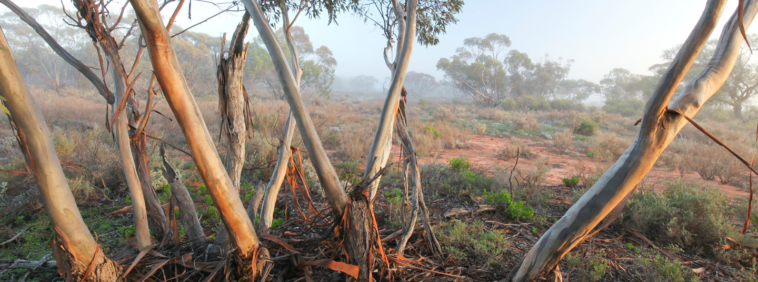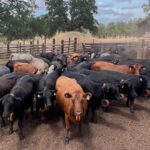As 2024 comes to a close, Australian Wildlife Conservancy (AWC) reflects on a year of remarkable achievements, made possible by your unwavering support. Despite the challenges of climate change and biodiversity loss, we have made significant strides in safeguarding Australia’s wildlife and ecosystems.
From expanding large-scale rewilding projects and conducting vital Ecohealth surveys, to the return of species like the Brushtail Possum and the first births of Western Quolls in the Western Australian wheatbelt, this year has been a testament to the power of resilience and innovation.
Our pioneering use of AI and IoT technologies has further enhanced our conservation efforts, and each milestone has reinforced our commitment to a sustainable future for Australia’s unique landscapes and wildlife.
As we continue to scale up our efforts, from sanctuary expansions to advanced 3D mapping for ecosystem recovery, we remain focused on preserving biodiversity for future generations.
None of this would be possible without your incredible support. Thank you for being an integral part of this journey, helping us create a lasting impact on Australia’s natural heritage.
AWC continued to lead the charge in conserving Australia’s unique biodiversity throughout 2024. This year saw remarkable scientific discoveries, innovative conservation techniques, and expanded efforts to protect endangered species and habitats. Here’s a glimpse into some of the most significant achievements and initiatives over the last twelve months.
Harnessing AI for Conservation
AWC embraced artificial intelligence in multiple groundbreaking projects:
- AI-Supported Wildlife Recognisers: With federal funding, AWC deployed cutting-edge AI tools to identify and monitor species, improving efficiency in tracking wildlife populations.
- AI Eavesdropping: Bioacoustic technology powered by AI helped detect endangered Pink Cockatoos, offering new insights into their vocal behaviour and habitats.
- IoT and conservation monitoring: AWC’s IT team has streamlined a series of labour-intensive manual processes with specialised remote sensors, revolutionising conservation monitoring on a landscape-size scale.
- 3D Mapping for Post-Flood Recovery: Advanced 3D modelling will guide the rebuilding of sanctuaries impacted by severe floods earlier in the year.
Brad Leue/AWC
Celebrating 30 Years of Success
2024 marked 30 years of wildlife translocations, a cornerstone of AWC’s strategy. From the Brushtail Possum to the Bridled Nailtail Wallaby, these translocations have re-established populations of threatened species in secure habitats.

Andy Howe/AWC
Expanding Frontiers in Research and Discovery
Collaborating with partners and researchers AWC continued to study and record the natural environment across the country.

Jake Barker/AWC
Wildlife moments
The year proved to be one for the record books, with a baby boom and rare glimpses into the wonder that is our natural history.
- Western Quolls at Mt Gibson: Four vulnerable western quolls were born in the sanctuary, marking a triumph in recovery efforts.
- Rare Blue Frog: A mutation turning a frog bright blue highlighted the wonders of Australia’s wildlife diversity.
- Baby Wombat Footage: Rare footage of a young, critically endangered wombat offered a hopeful glimpse into the species’ future.
- Wet season wildlife boom: Newhaven Wildlife Sanctuary, on Ngalia-Warlpiri and Luritja Country in Central Australia, was overflowing with new life after receiving almost a year’s worth of rain in just a few days.

Dr Bryony Palmer/AWC
Adapting to Climate Change
AWC responded to shifting climates, tailoring strategies to mitigate impacts on vulnerable species and ecosystems.

Elly Gearing/AWC
New beginnings
By combining cutting-edge science with community partnerships, AWC remains a beacon of hope for the future of Australian biodiversity.
As we celebrate the achievements of the past year, we also look ahead with optimism and determination. Together, we are building a future where Australia’s diverse ecosystems thrive, and its iconic wildlife continues to inspire generations.
Thank you for being an integral part of this journey. Conservation begins with you.




GIPHY App Key not set. Please check settings